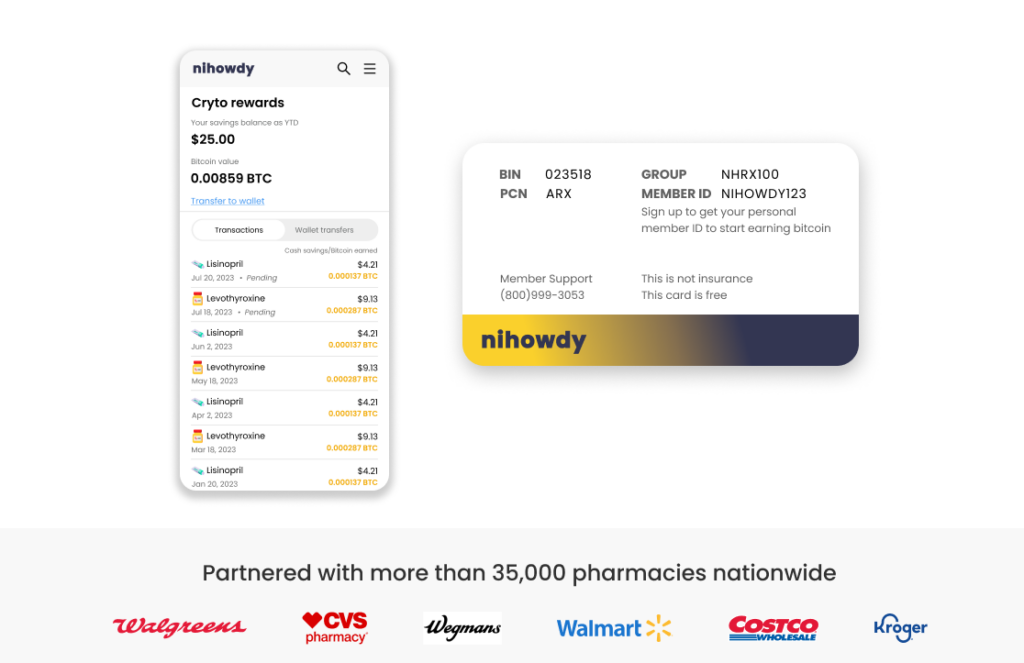Can You Take Ibuprofen with Diclofenac? Understanding the Risks and Alternatives


Can you take ibuprofen with diclofenac? No, combining these two nonsteroidal anti-inflammatory drugs (NSAIDs) is generally unsafe due to overlapping effects and heightened risk of side effects. This article provides a detailed look at the dangers of taking ibuprofen and diclofenac together and explores safer alternatives for pain management. It’s designed to give you the critical safety information you need—clear, concise, and valuable.
Key Takeaways
Taking ibuprofen with diclofenac can cause serious side effects like gastrointestinal issues and increased cardiovascular risks because they belong to the same class of drugs.
There are multiple alternatives to taking ibuprofen and diclofenac together, including prescription medications, over-the-counter options, and non-medication approaches such as physical therapy and acupuncture.
Consulting with a healthcare provider is essential for creating a personalized treatment plan and ensuring safety, especially when considering multiple medications.
Ibuprofen and Diclofenac Drug Interactions: A Risky Combination?

Ibuprofen and diclofenac are prominent members of the anti-inflammatory drugs called NSAIDs, commonly used to alleviate symptoms associated with rheumatoid arthritis and similar inflammatory ailments. Mixing these two medications can be precarious. Since ibuprofen and diclofenac both hail from the same drug family, using them in tandem could provoke unwanted consequences.
Consider your body a complex metropolis governed by its regulatory systems. Under typical conditions, NSAIDs like ibuprofen and diclofenac navigate this landscape smoothly, mitigating inflammation akin to traffic control. However, introducing both drugs into your system simultaneously escalates the likelihood of encountering adverse effects, much like traffic accidents in the city’s thoroughfares. Such interactions may have repercussions beyond minor discomforts. They can lead to severe headaches, gastrointestinal distress, or even escalated cardiovascular risks, along with other critical health issues.
Exercise caution before combining over-the-counter ibuprofen with physician-prescribed diclofenac. We must delve deeper into what such drug interactions might entail for one’s well-being. The subsequent sections will demystify the specific dangers inherent in this medicinal mix-up, helping you stay informed and ensuring safety prevails when managing pain through medication—after all, knowledge serves as the ultimate safeguard for our health.
Gastrointestinal Complications
Our gastrointestinal system operates much like a bustling marketplace, where nutrients are exchanged and absorbed. However, introducing ibuprofen and diclofenac can disrupt this orderly process, leading to gastrointestinal (GI) complications. These drugs can inflame the lining of the stomach and intestines, potentially causing ulcers or severe gastrointestinal bleeding—issues that are not only uncomfortable but can be life-threatening.
Imagine going about your daily routine when you suddenly notice unusual symptoms, such as unexplained bruises or dark, tar-like stools. These signs should trigger immediate concern and prompt you to seek urgent medical care. One particularly critical situation is a perforation in the gastrointestinal tract, where a hole forms in the stomach or intestinal walls. This condition is as serious as it sounds and becomes more likely when NSAIDs are used together.
If you have been combining ibuprofen with diclofenac, it is essential to be aware of the potential GI risks associated with these medications. Prevention is always better than cure, so recognizing and avoiding these dangers is crucial to maintaining your health.
Cardiovascular Risks

Shifting focus from the complex interactions within our gastrointestinal tract to the arterial roadways of our cardiovascular system, we understand that blood must flow unimpeded, akin to traffic on an expressway. Regrettably, using NSAIDs such as ibuprofen and diclofenac can upsurge the risks of severe cardiovascular incidents, including heart attacks and strokes. These are not mere inconveniences but significant barriers compromising your well-being.
Imagine driving smoothly when suddenly a warning indicator illuminates—signaling potential engine issues. This is comparable to how combining these particular NSAIDs elevates one’s increased risk for heart failure or stroke—it serves as a crucial alert that demands immediate attention before escalating into a critical problem.
Individuals dealing with osteoarthritis need to be aware of these cardiovascular dangers because managing pain without jeopardizing cardiac health is a high-stakes game. Exploring strategies for maneuvering through these hazards ensures we maintain both effective pain management and optimal safety during our life journey.
Other Adverse Effects
Gastrointestinal and cardiovascular complications often take center stage, yet ibuprofen and diclofenac can have other less common but equally concerning adverse effects. These include liver injury—perhaps an infrequent occurrence but a potentially dramatic one that could significantly alter the narrative of your health without proper caution.
Our kidneys operate quietly in the background, tirelessly purging our system of alcohol and its waste. They may also suffer harm from these drugs’ cumulative influence. This damage can reveal itself through altered urine output and edema—warning signs we must heed carefully. Such symptoms remind us to consider the broader impact on bodily systems while seeking pain relief.
In essence, it’s crucial to weigh not just how these medications alleviate pain but also their toxicity and potential adverse implications for different body parts. We ought to consciously assess this intricate interplay with vigilance because understanding these risks propels us toward more mindful approaches to managing discomfort.
Alternatives to Combining Ibuprofen and Diclofenac
Avoiding the dangers of mixing ibuprofen with diclofenac doesn’t mean one must endure pain. Fortunately, many safer alternatives for pain management are readily available to us. Our medicine cabinet can be considered a resource-filled reserve, with various choices waiting to be utilized. The array of options extends from prescribed solutions to those that are accessible over-the-counter and even include non-pharmacological strategies, all set to combat pain more safely. Among these options are:
Acetaminophen (Tylenol)
Naproxen (Aleve)
Aspirin
Topical applications like creams and gels (e.g., Bengay or Icy Hot)
Physical therapy techniques
Applications of heat or cold treatments
Massage therapies
Procedures like acupuncture
It’s crucial to always seek advice from your healthcare provider before embarking on any new medication regimen or other medicines you may consider taking alongside them.
Think about it as if you’re selecting a partner to navigate the road toward alleviating your discomfort—a dependable confidant who has been proven effective in their role. Prescription choices such as COX-2 inhibitors might serve this purpose well by providing notable relief while mitigating risks associated with gastrointestinal distresses often linked with other medications—meanwhile offering compatibility when paired up together with diclofenac, making acetaminophen another safe bet that usually allows for combined usage without significant issues.
Then again, what if pharmaceutical remedies aren’t quite what you’re looking for? You’ll be pleased then because several alternative methods, excluding drugs, exist that guide towards adeptly handling discomfort via naturalistic routes. This includes physical therapy practices along with lifestyle adaptations paving alternate pathways towards managing pain effectively—not forgetting to mention how either precision-driven needlework involved in acupuncture sessions or therapeutic relaxation resultant upon temperature-specific modalities could each contribute significantly here, too within one’s quest exploring viable alternatives thoroughly—with these endeavors potentially becoming advantageous companions during recovery travels ahead.
Prescription Alternatives

Delving into prescription-based solutions, we uncover alternatives that may be less well-known yet equally effective. Engaging with a healthcare provider can reveal paths to medications that bypass the risks associated with combining NSAIDs, such as nonsteroidal anti-inflammatory drugs and alternative non-steroidal options. Consider a drug like sulfasalazine—it serves as a safe refuge for individuals grappling with ailments like juvenile rheumatoid arthritis without the harsh side effects typical of diclofenac ibuprofen mixes.
As an ally in the fight against pain, sulfasalazine stands out by potentially offering reduced cardiovascular and gastrointestinal repercussions when contrasted with other NSAID counterparts. Those worried about expenses can rest easily—affordable generic versions of this reliable medication are readily accessible and offer budget-friendly relief to patients.
Selecting the appropriate treatment is pivotal in crafting your personal health journey narrative. Prescription choices could unlock scenarios where both alleviation from discomfort and safety harmonize perfectly together. Opting for tailored prescriptions means you’re not solely picking out drugs. Instead, you’re charting a course tailored to honor your specific health prerequisites and apprehensions.
Over-the-Counter Options
In the pursuit of over-the-counter pain remedies, a comprehensive and promising selection is available. Take topical NSAIDs, for example. They specialize in addressing acute muscular and joint discomfort with a diminished likelihood of causing turmoil within the gastrointestinal system. These agents act as focused warriors against pain by confining their effects to troubled areas instead of inciting broader digestive issues.
Alternatively, applying capsaicin topically could be an effective strategy for seeking a distinct relief method. Originating from chili peppers, this pungent substance offers thermal comfort that can alleviate muscle strains, arthritis symptoms, and sprains without introducing the gastrointestinal risks typically associated with orally ingested NSAIDs such as ibuprofen. Meanwhile, those seeking gentler solutions might turn to nonacetylated salicylates, which deliver soothing benefits more tenderly than their stronger NSAID counterparts.
When it comes to naproxen—an additional over-the-counter choice—pairing it with diclofenac may prove less risky for cardiac health relative to other non-aspirin NSAIDs. When navigating these therapeutic options, it’s crucial to thoughtfully consider how each influences your overall physiological terrain. By investigating carefully, you’re likely able to find an OTC solution that mitigates pain and fits harmoniously with your broader wellness goals.
Non-Medication Approaches

At times, the most beneficial strategy might be to avoid medications altogether. Alternative pain relief methods leverage the body’s intrinsic recuperative powers instead of relying on pharmacological solutions. Techniques like physical therapy, acupuncture, and Transcutaneous Electrical Nerve Stimulation (TENS) provide tactile approaches to managing discomfort.
Mind-body practices that encompass more than just physiological treatment have therapeutic value. They also target mental health as a component of comprehensive pain care. This includes interventions such as psychosocial counseling and therapies focused on comfort, which help reshape one’s pain perception by addressing its tangible and emotional dimensions.
Botanical supplements are available for those inclined towards natural options that minimize inflammation using plant-based ingredients rather than industrially produced chemicals found in conventional medicines. Natural agents, including arnica, curcumin, and enzymes like bromelain, represent potent yet gentle alternatives, contributing to an integrative method for achieving analgesia.
Consult Your Healthcare Provider
After evaluating the risks and alternatives associated with pain management, consulting with a healthcare provider remains essential. This is akin to engaging a knowledgeable guide when venturing into uncharted territory. The purpose of this clinical consultation goes beyond just ensuring safety. It’s about devising an optimal path tailored to your health needs. When healthcare professionals are involved in creating individual treatment plans, there are usually better outcomes for patients and increased satisfaction levels.
Imagine discussing your medical history intimately with your doctor, like analyzing detailed maps on a table before you. Together, you would devise a journey that fully considers all aspects of your health indicators, lifestyle nuances, and unique preferences—like two experts forging ahead in partnership—to ensure that any prescribed medication aligns perfectly well with who you are.
This bespoke strategy becomes even more vital when multiple medications come into play. A healthcare professional will be crucial in helping you decipher the complicated web of potential drug interactions—consider every nuance of your personal health narrative. Securing that appointment should be prioritized to customize a pain management plan exclusively suited to meet your specific requirements.
Personalized Treatment Plans
Creating a personalized treatment plan is like weaving a complex tapestry, with your healthcare provider as the skilled weaver integrating medical expertise with the unique threads of your individual story. They skillfully adjust their approach to ensure that every aspect of your care fits you perfectly. This process involves delving into the complexities of your well-being, striving for outcomes that hold significance in your world, and developing a health strategy explicitly tailored to reflect who you are.
Maintaining ongoing communication acts like fine-tuning this artwork. It’s through regular engagement with your healthcare provider that they can ensure each medication continues to suit changing aspects of your wellness journey. The adaptability inherent in such conversations allows for seamless adjustments amidst shifting life scenarios.
By actively participating in crafting a care regimen unique to you, you can have greater control over minimizing potential dangers when using medications such as ibuprofen and diclofenac together. This customized approach serves as a protective meshwork designed from an intimate understanding of all aspects influencing drug interactions within one’s health landscape, providing defense against unwelcome complications arising from combining drugs.
Monitoring for Adverse Effects
Monitoring for adverse events and effects is essential to any treatment plan. Your healthcare provider acts as your vigilant guard, constantly watching for any indications of problems and preparing to make adjustments when required.
In a setting where trust and shared values are fundamental, your team of healthcare professionals—including the one you directly interact with—join forces to protect your health. They act as guardians, ensuring that the medications you are prescribed work together effectively without causing adverse effects.
Each consultation serves as a strategic checkpoint on the path to better health. During these meetings, your healthcare provider evaluates how well your treatment works and makes necessary modifications to optimize your medication regimen. The goal is to maintain smooth progress in improving your health while avoiding unforeseen difficulties.
NiHowdy’s Prescription Discount Card
Navigating the complex world of medication interactions and seeking out more cost-effective alternatives, we transition into considering financial viability and incentives. Step forward with NiHowdy’s Prescription Discount Card, a transformative player that saves on medications. This card transcends mere price reductions. It enhances your experience by providing the additional perk of earning Bitcoin rebates. It’s as if you’re not just alleviating pain through drug purchases but also building toward future prosperity with each transaction.
Imagine the comfort that comes from understanding your prescription now carries savings that alleviate bodily aches and ease economic burdens. NiHowdy’s card provides this solace by offering substantial drug discounts, thus improving healthcare affordability and accessibility. To augment these benefits, every purchase made using their card is rebated with complimentary Bitcoin—effectively making your investment in medicine an avenue for potential financial growth.
Employing NiHowdy’s premier discount card signifies dual management over health and other related finances—an affirmation of their dedication to enhancing customer life quality. The card presents perks that extend beyond immediate pharmaceutical needs toward long-term economic advancement opportunities. Henceforth, let us explore the advantages of utilizing NiHowdy’s revolutionary prescription discount mechanism in detail.
Benefits of NiHowdy’s Card
The advantages of employing NiHowdy’s Prescription Savings Card are as varied as they are remarkable. Imagine strolling into your local drugstore, flashing the NiHowdy card, and witnessing an immediate drop in the cost of your medications—with potential savings reaching up to $95 for each prescription filled. This represents a victory both financially and health-wise.
Yet these benefits extend beyond just point-of-sale savings. By utilizing the NiHowdy card, you seamlessly enter the realm of cryptocurrency without delving into its inherent market complexities. With every medication refill, there’s an opportunity to accrue as much as 3% back in Bitcoin rebates, which hold prospects for growth similar to nurturing a sprout in rich soil—transforming routine healthcare expenditures into savvy investment moves.
Anticipating long-term appreciation could transform how you view medical costs. If Bitcoin appreciates over time, so could your accrued earnings through this scheme—providing solace against climbing medical expenses or contributing towards other pivotal financial goals. The offerings from NiHowdy’s card transcend fleeting satisfaction by paving avenues toward fiscal fortitude and self-reliance.
How to Get Started
Embarking on the path to both financial savings and rebates is straightforward with NiHowdy’s Prescription Savings Card. Here’s how you can begin.
Complete a free registration at our website.
Prepare to access discounts that will make purchasing your medications more affordable.
Rest assured about confidentiality—your details are required solely for Bitcoin withdrawal purposes to an external wallet, not during the initial sign-up.
After registering, use your NiHowdy card as a passport to immediate price reductions at any participating pharmacy network. Find your medication in their system, compare prices among options, and then present your card when you’re paying—it’s a seamless solution that benefits wellness and budgeting.
Why delay? Seize the opportunity now. Use NiHowdy’s Prescription Savings Card to manage your prescription expenses efficiently and earn Bitcoin back on every transaction. You’ll address health concerns while also nurturing better fiscal well-being in the future.
Summary
As we end our journey, it’s clear that while ibuprofen and diclofenac may be effective soldiers in the fight against pain, their combination poses risks that require careful consideration. Gastrointestinal complications, cardiovascular risks, and other adverse effects are the potential landmines on this path. However, the trail doesn’t end here—alternatives abound, from prescription options to OTC choices and non-medication strategies, each offering a safer route to relief.
Consulting your healthcare provider is the compass that will guide you through the complexities of pain management, ensuring that your treatment is effective and safe. With NiHowdy’s Prescription Discount Card, the journey towards health becomes more affordable and potentially profitable. It’s about taking charge of your health, being informed, and making choices that benefit your body and wallet.
Frequently Asked Questions
Can I take ibuprofen and diclofenac together for my arthritis pain?
It is advisable not to combine ibuprofen with diclofenac because doing so can elevate the risk of adverse effects. Consult a healthcare provider for guidance tailored to your specific situation.
What are some signs of gastrointestinal complications from NSAIDs?
Should you experience atypical bleeding, stools that are red or black, or intense headaches during pregnancy after the use of NSAIDs, this may be a sign of complications within the gastrointestinal tract, like ulcers or bleeding. It is crucial to consult with a healthcare professional promptly.
Are there any cardiovascular risks associated with taking NSAIDs like ibuprofen and diclofenac?
Steer clear of using NSAIDs such as ibuprofen and diclofenac together because doing so may heighten the danger of severe cardiovascular incidents like heart attacks and strokes. This is particularly important for individuals who already have underlying health issues.
To ensure your safety, it’s advisable to seek advice from a doctor if necessary.
What are some alternatives to combining ibuprofen and diclofenac?
Consider other treatment options, such as COX-2 inhibitors, acetaminophen, physical therapy, and acupuncture, as substitutes for taking ibuprofen with diclofenac. Each of these alternatives has its own advantages. Evaluate your specific health requirements when deciding on a course of action.
How does NiHowdy’s Prescription Discount Card provide additional savings?
By utilizing NiHowdy’s Prescription Discount Card, individuals can receive considerable discounts on their prescription medications while earning up to 3% back in Bitcoin as a rebate. This innovative approach could help reduce future healthcare expenses for users.


